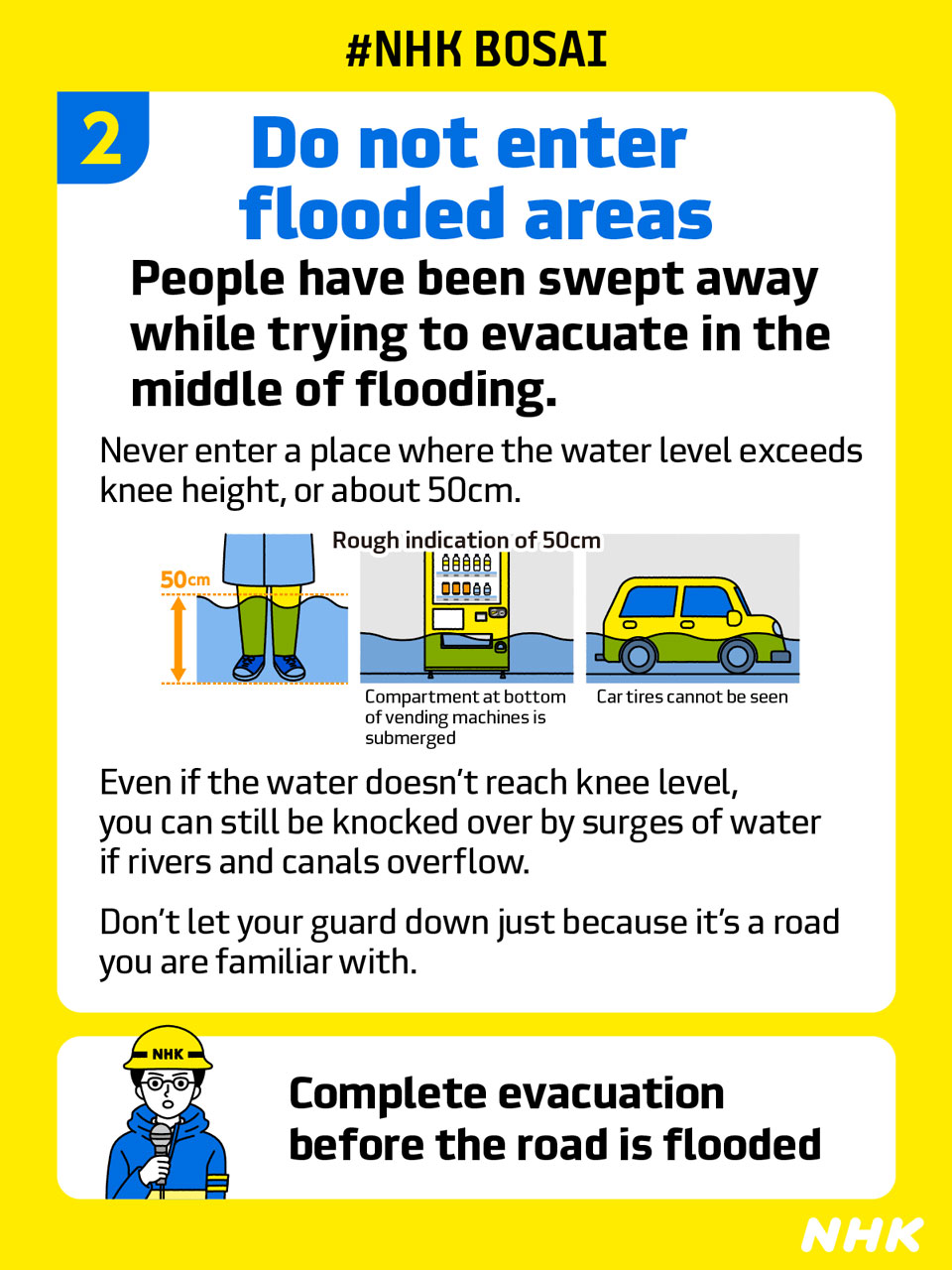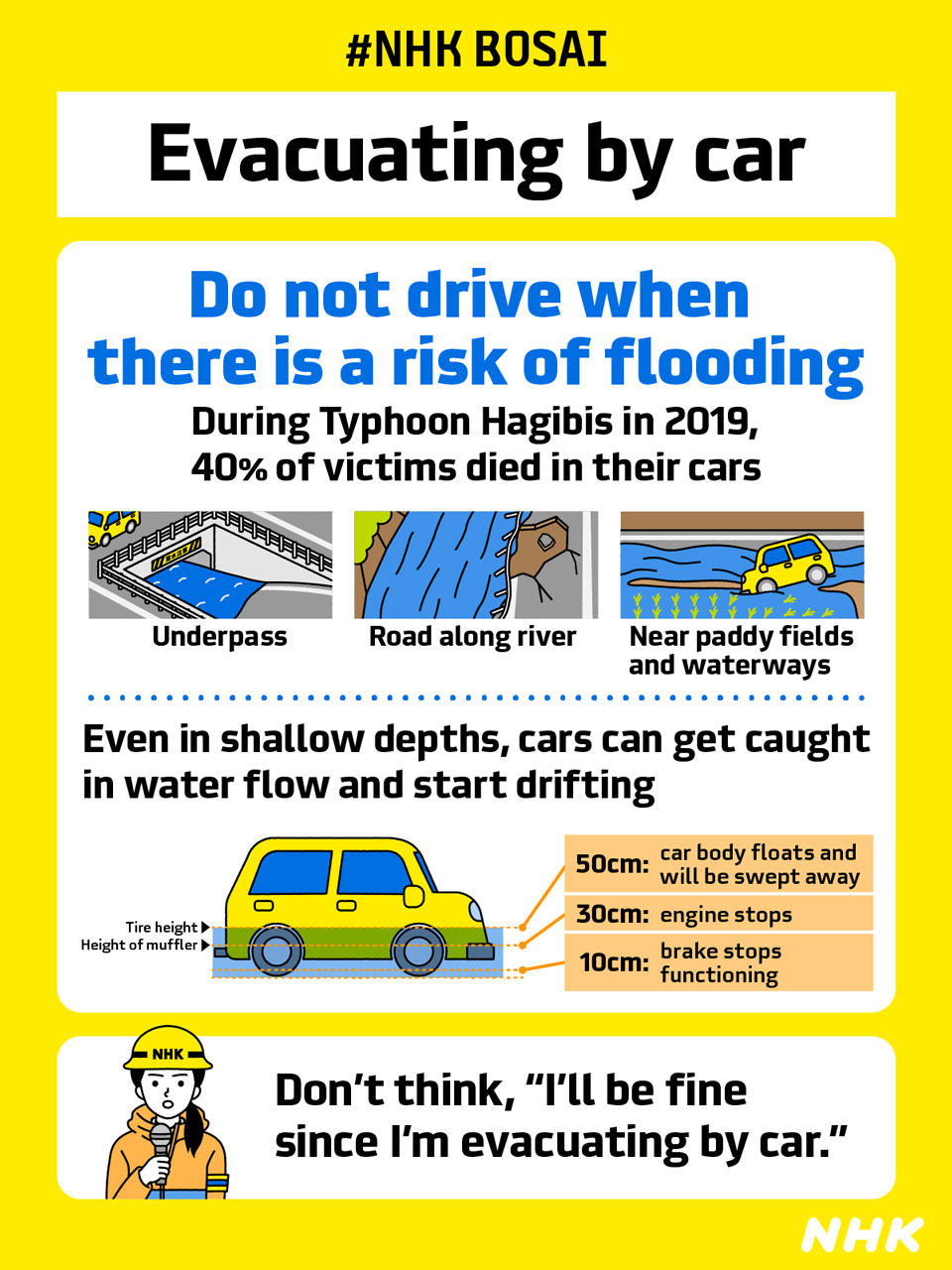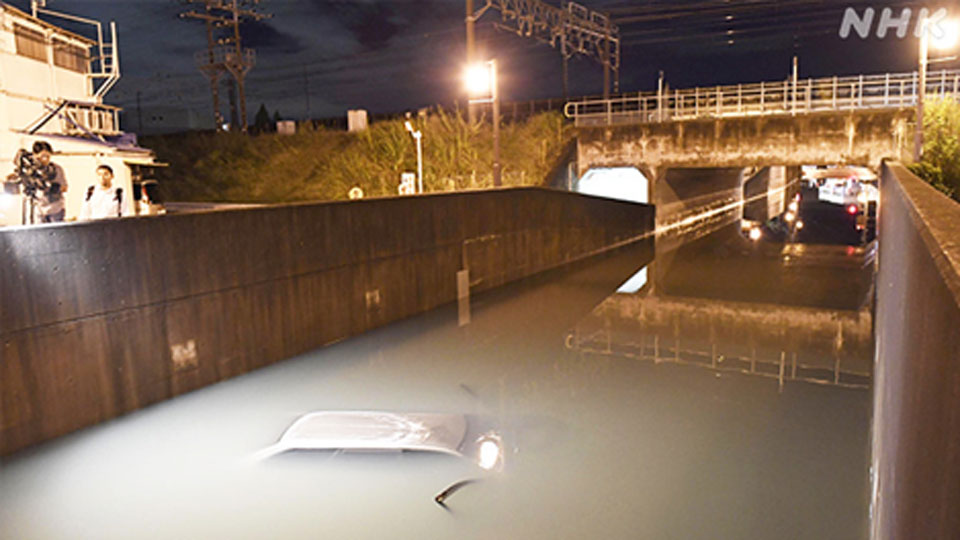
Do not wear rain boots. Wear clothes that are easy to move in.

While evacuating, wear clothes that are easy to move around in. Wear long sleeves and long pants even though it might be hot. This will protect you from cuts and injuries.
Wear sneakers you are comfortable in. Don't wear rain boots as they are difficult to move in once water gets inside. Don't wear sandals as they can be easily washed away.
Keep your emergency bag as light as possible. Use a backpack so both your hands are free to break your fall. Wear a raincoat instead of using an umbrella.
Walking is almost impossible when water reaches knee level

When evacuating, try to avoid being alone. Travel with others. Avoid places that are flooded. Once the water level exceeds knee level, or about 50 cm, it will be difficult for even adult men to walk due to water pressure. There is a risk of getting your foot stuck even in shallower water.
When the road is flooded, it is difficult to see where you are walking, increasing the risk of falling into a manhole, a gutter, or an irrigation canal.
If you do have to pass through a flooded area, proceed carefully and check where you are stepping with an umbrella or cane.

Things to be careful of when evacuating by car
Don't think you can wait to evacuate because you have a car. Nearly half the fatalities during Typhoon Hagibis in 2019 were people traveling by car. Do not go outside when rains and winds are intense, even if you plan to drive.

Avoid roads along rivers and rice fields
If the water is overflowing, you will not be able to tell where the boundary of the road is. You may fall into a ditch and sink. People have died in past disasters when they fell off roads in their cars without noticing.
Avoid flooded roads
Even if the water doesn't seem deep, it's difficult to know for sure. Cars can easily get stuck, swept away, or even be submerged. If you come across a flooded road, consider turning around and finding another way.
If you have to pass through a flooded road, slow down and leave some distance between any vehicle in front of you. The splash from the road will reduce visibility, increasing the risk of a rear-end collision. Also, driving fast will lead to water getting inside the engine, causing it to stop.
Flooding over 30 centimeters is dangerous
In water about 30 centimeters deep, the engine of a car typically stops working. In anything deeper than 50 centimeters, there is a risk of the car floating and being swept away.
But this doesn't mean shallower water is safe. Situations can change very quickly in heavy rain, and if a nearby river starts overflowing, cars can easily be swept away.
Flooding makes it difficult to open car doors because of water pressure. Once inside, you may have trouble getting out. You should keep a tool to break the window glass in the case of emergency. If you don't have anything, insert one of the two metal bars under the headrest into the gap between the door and the window and pull firmly to break the glass.
Pay attention to underpasses

Avoid underpasses during heavy rain. They are lower than surrounding areas which makes it easy for water to accumulate quickly.
